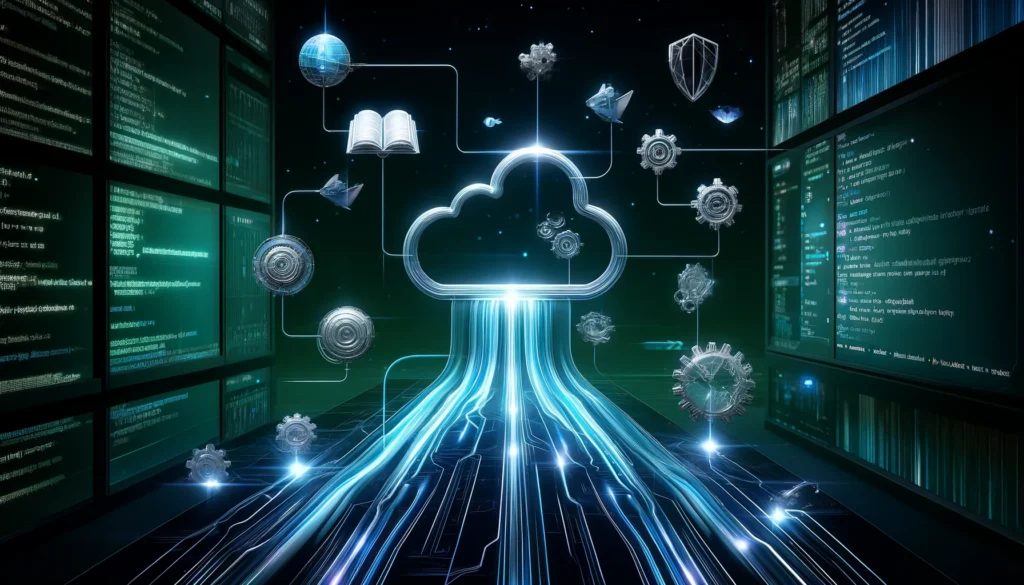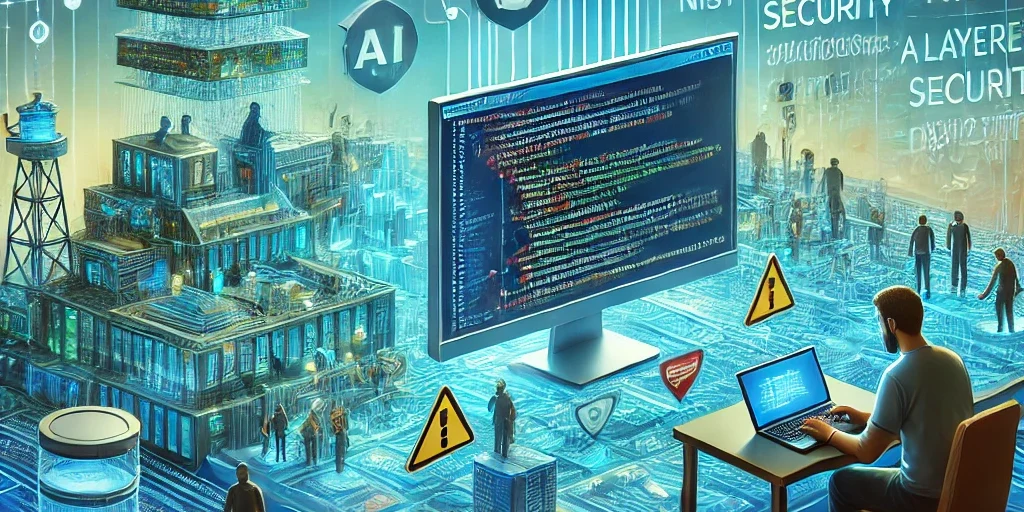In the technology world, security cannot be treated as an afterthought. It must be integrated into every stage of the software lifecycle, from initial development to maintenance and deployment. This article covers the key components that make up secure development, offering a detailed and relaxed overview for developers and IT professionals to enhance their processes and ensure the integrity of their projects.

1. The Importance of Libraries in Development
Why Use Libraries?
Libraries are pre-built sets of code that allow you to solve common functions and tasks without having to write everything from scratch. This practice saves time and accelerates the development process. However, using libraries also brings security challenges, as a vulnerability in one library can compromise the entire system.
Best Practices
- Keep Libraries Updated: Monitor updates and security patches to avoid known issues.
- Verify the Source: Use libraries from reputable sources and avoid components from dubious origins.
- Audit the Code: Whenever possible, review the code of critical libraries to ensure there are no security gaps.
2. Development Tools and Integrated Development Environments (IDEs)
The Role of Compilers and Tools
Compilers, assemblers, and other development tools transform high-level code into a format that the computer can understand. While they are essential for creating software, these tools can also be targets for attacks if they are not configured and updated properly.
IDEs: A Complete Platform
Integrated Development Environments (IDEs) simplify developers’ lives by combining editing, debugging, and testing in one interface. However, like any other tool, they need to be managed carefully:
- Secure Configuration: Review default settings and adjust permissions to minimize risks.
- Regular Updates: Ensure that you install the recommended updates from your IDE vendor.
- Integration with Security Tools: Use plugins and extensions that help identify vulnerabilities during development.
3. Execution Environment: Runtime and Code Interpretation
Understanding the Runtime Environment
The runtime environment is responsible for transforming source code into an executable application, regardless of the platform. This process enables the creation of portable, self-contained applications but also requires heightened security attention.
Interpreters Versus Runtime Environments
While the runtime typically packages all the necessary components to run the software, interpreters require the target environment to have the necessary tools to execute the code. In both cases, it is crucial to:
- Ensure Component Integrity: Verify that there are no malicious modifications or flaws in the packages used.
- Isolate the Application: Whenever possible, use isolation techniques (such as containers) to minimize the impact of a potential failure.
4. CI/CD: Continuous Integration and Continuous Deployment
What is CI/CD?
Continuous Integration (CI) and Continuous Deployment (CD) are practices that automate the incorporation and deployment of code. With CI/CD, every code change is automatically tested and, if approved, integrated into the production environment.
Benefits and Considerations
- Automation and Agility: Automated tests and integrations allow for rapid identification and resolution of issues.
- Built-In Security: Automated testing and code reviews help identify vulnerabilities before they reach production.
- Error Management: If a test fails, the code is not promoted, ensuring that only secure versions are made available to users.
5. Code Repositories and Version Control
Storing and Managing Code
Code repositories are fundamental for organizing and managing software projects. They not only store source code but also maintain a history of changes, allowing you to revert to previous versions if problems occur.
Security Best Practices
- Access Control: Restrict repository access and ensure that only authorized individuals can make changes.
- Secure Hosting: When possible, use private repositories or, if third-party services like GitHub are used, follow recommended security practices.
- Monitoring and Auditing: Implement monitoring systems that log suspicious or unauthorized activities.
6. General Security Considerations in Development
Security Is a Continuous Process
Software security is not limited to the moment of coding or deployment—it is an ongoing process that involves:
- Risk Assessments: Regularly conduct evaluations to identify and mitigate potential vulnerabilities.
- Change Management: Follow strict procedures for modifications in both the environment and the code to prevent unauthorized changes from compromising security.
- Continuous Training: Keep your team updated on the latest threats and security best practices, ensuring everyone adheres to the same standards regardless of their role.
Cultivating a Security Culture
For security to be truly effective, it must become part of the organization’s culture. This means all departments—including development—should follow the same security guidelines and procedures, without any special privileges that might create additional risks.
Conclusion
Incorporating security at every stage of the software lifecycle is crucial for protecting data and ensuring system integrity. From the conscious use of libraries and development tools, through proper configuration of execution environments, to implementing CI/CD pipelines and managing code repositories securely, each component plays a vital role.
Adopting a holistic and integrated security approach not only minimizes risks but also strengthens trust among users and stakeholders. By following these best practices and staying vigilant about updates and vulnerabilities, your team will be better equipped to face the challenges of the digital world.
Investing in secure development pays off in the long run, offering both peace of mind and operational efficiency. Stay updated, invest in training, and never underestimate the importance of a secure environment for the success of your software.
This article is the third installment in a series that delves deeply into best practices in software development security and risk management. To further enrich your knowledge, we invite you to explore the previous articles: Security in Software Development: Controls That Make a Difference and Risks and Mitigations in Programming Languages: What You Need to Know. Click the links to uncover essential strategies for elevating your projects and ensuring excellence in your implementations!



Pingback: How to Incorporate Application Security Testing: A Comprehensive Approach - FortShield: Security for Professional Developers
Pingback: The Importance of Logging and Auditing in Software Development - FortShield: Security for Professional Developers
Muito legal! Alguns pontos extremamente válidos! Agradeço por você escrever este redação
e o resto do o site é extremamente bom.
Obrigado pelo feedback. Continue acompanhando teremos muito mais…
Estou navegando online há mais de 3 horas hoje, mas nunca encontrei nenhum artigo interessante como o
seu. É bastante válido para mim. Na minha
visão, se todos os proprietários de sites e blogueiros fizessem
um bom conteúdo como você fez, a net seria muito mais útil do
que nunca.
Muito obrigado por dedicar um tempo para deixar esse feedback tão positivo!
Vamos seguindo juntos nessa jornada de aprendizado e descoberta!
Tenho certeza de que este artigo tocou todos os visitantes da
internet, é realmente muito exaustivo pedaço de
escrita sobre a construção de um novo página da web.
Ahaa, é uma agradável diálogo sobre o tópico deste postagem aqui neste blog, eu li tudo isso, então neste momento eu também estou comentando aqui.
Ahaa, é uma boa discussão sobre deste pedaço de escrita aqui neste weblog,
eu li tudo isso, então agora eu também estou comentando aqui.
Hola! Tenho lido seu blog por algum tempo agora e finalmente tive a bravura de ir
em frente e dar um alô para você de Kingwood Texas!
Só queria mencionar continue com o bom trabalho!
Obrigado…
Olá você se importaria em dizer qual plataforma de blog você está usando?
Estou planejando começar meu próprio blog em breve,
mas estou tendo um difícil momento para tomar uma decisão entre
BlogEngine/Wordpress/B2evolution e Drupal. O motivo
pelo qual pergunto é porque seu design e estilo parecem diferentes da maioria dos blogs e estou
procurando algo único. PS Desculpe por sair do assunto, mas eu
tinha que perguntar!
Olá,
Agradeço por sua solicitação. Entretanto, fornecer as informações requeridas poderia comprometer a segurança do meu site, expondo-o a possíveis vulnerabilidades.
Agradeço pela compreensão.
Eu vou imediatamente agarrar seu rss como eu não posso em encontrar seu e-mail assinatura link ou serviço de newsletter.
Você tem algum? Gentilmente permita eu perceber para que eu puder assinar.
Obrigado.
É o melhor momento para fazer alguns planos para o futuro e
é hora de ser feliz. Eu li este post e se
eu pudesse eu desejo sugerir a você algumas coisas interessantes ou dicas.
Talvez você pudesse escrever os próximos artigos referindo-se a
este artigo. Eu desejo ler ainda mais coisas sobre
isso!
É muito sem esforço descobrir qualquer assunto
na web em comparação com livros, pois encontrei
este pedaço de escrita neste site.